Can You Freeze Kale? Here’s All You Should Know
In a world full of super healthy green vegetables, kale is one of the absolute best in its class. With a wealth of nutritious compounds and even some strong medicinal properties, this leafy green plant should be a regular part of everyone’s diet. However, the challenge with any leafy vegetable is how to preserve it long enough to benefit from its nutritional aspects. The answer, of course, is to freeze it.
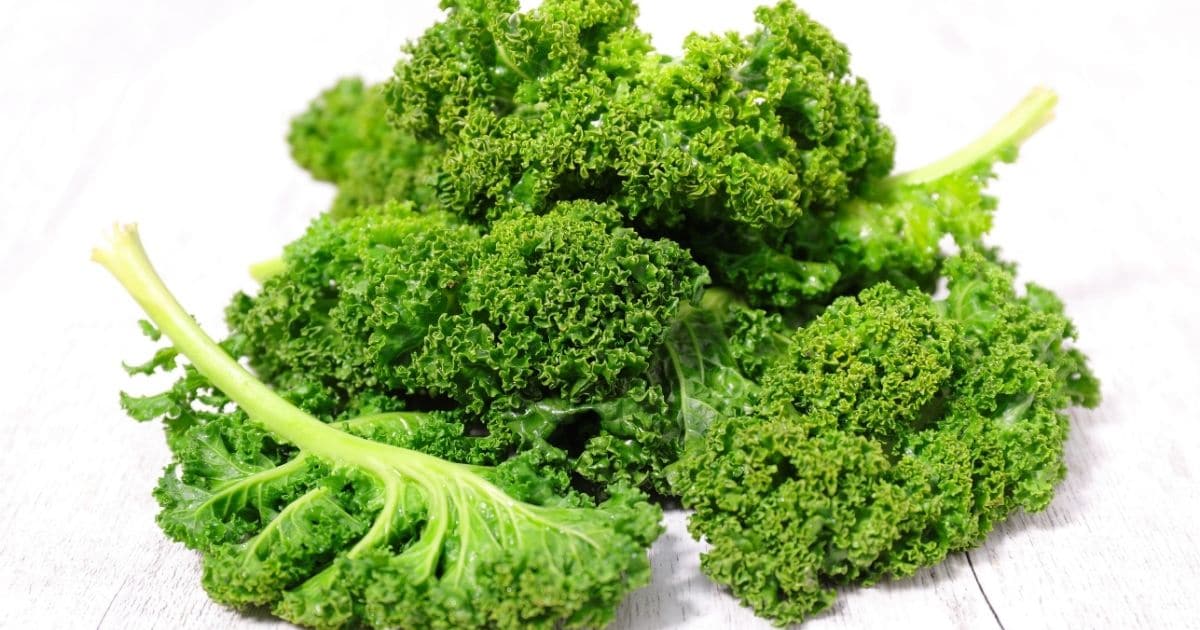
Can You Freeze Kale?
You can freeze blanched or unblanched kale. However, if you freeze kale without blanching, you need to use it within four to six weeks, or it will develop a bitter flavor because of the enzymes in the leaves, whose process is halted by blanching. Frozen kale that is blanched will last for up to twelve months.
Read on to learn more about the many incredible benefits of kale, and the best ways to freeze, thaw, and utilize this fantastic vegetable.
Health Benefits of Kale

As mentioned above, kale is one of the healthiest plant-based foods on the planet, and its nutrient-density is second to none. There are many different kale varieties, and they can look different depending on which kind you have in your garden or supermarket, but most types will have either green or purple leaves that can be either smooth or curly in shape. Easily the most common variety of kale is referred to as curly kale or Scots kale. You can identify this type by its green curly leaves and relatively hard stem.
Like most leafy greens, kale possesses very high quantities of antioxidants. Antioxidants are described as substances that help counteract the oxidative damage caused by free radicals inside of your body. These include things like beta-carotene and Vitamin C, along with several kinds of flavonoids and polyphenols as well.
One of the unique aspects of kale is that substances that happen to be antioxidants also provide numerous other benefits. The previously mentioned flavonoids include substances like quercetin and kaempferol, which are found in reasonably large amounts in kale leaves. These substances, which have undergone many studies in both test tubes and animals, have been proven to have excellent results, which include but are not limited to the following:
- Heart-protective effects
- Blood-pressure lowering effects
- Anti-inflammatory effects
- Antiviral effects
- Anti-depressant effects
- Anti-cancer effects
In terms of nutritional density, kale provides the following nutrients based on a single cup, which equates to approximately 2.4 ounces or 67 grams of raw kale.
- Vitamin A: 206% of your recommended daily value (through beta-carotene)
- Vitamin K: 684% of your recommended daily value
- Vitamin C: 134% of your recommended daily value
- Vitamin B6: 9% of your recommended daily value
- Manganese: 26% of your recommended daily value
- Calcium: 9% of your recommended daily value
- Copper: 10% of your recommended daily value
- Potassium: 9% of your recommended daily value
- Magnesium: 6% of your recommended daily value
Alongside these amounts, kale also provides 3% or more of the recommended daily amount of Vitamin B1, Vitamin B2, Vitamin B3, iron, and phosphorus. These total amounts come with 33 calories total, only 6 grams of carbs, and 2 of those carbs are fiber, and 3 grams of protein.
There is very little fat in kale, and the majority of that fat content is in the form of alpha-linolenic acid, which is an omega-3 fatty acid. Combining this vast array of vitamins and the meager calorie count is why kale is one of the most nutrient-dense foods anywhere in the world.
The Best Ways To Freeze Kale
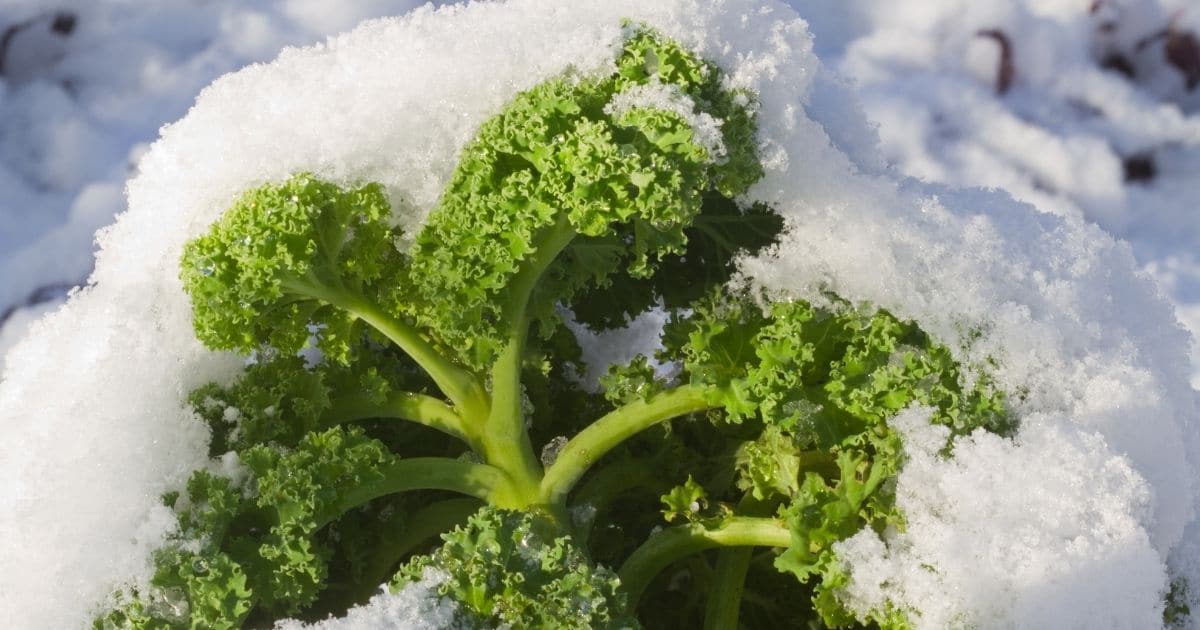
There are a few excellent ways to freeze kale, and it’s worth exploring each option to find the best one that suits your needs. Unlike most other leafy greens, you can get away without blanching kale before freezing it, but only if you plan to use the frozen veggies within four to six weeks. Bear in mind that even then, your unblanched kale may develop a very bitter flavor.
How To Freeze Unblanched Kale
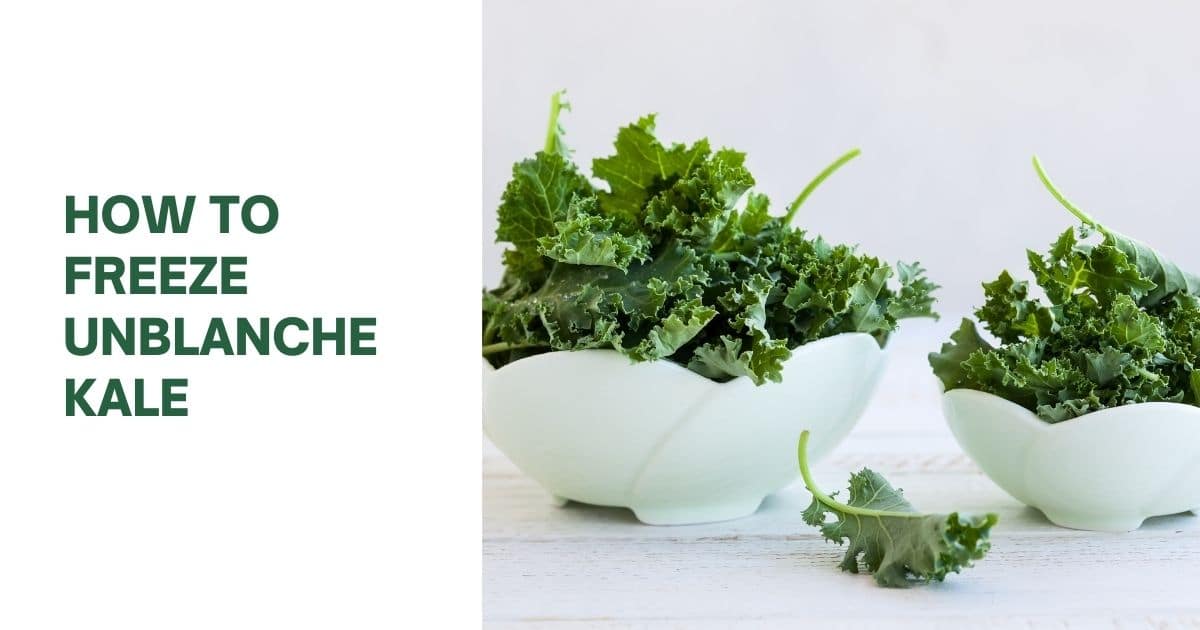
Step 1
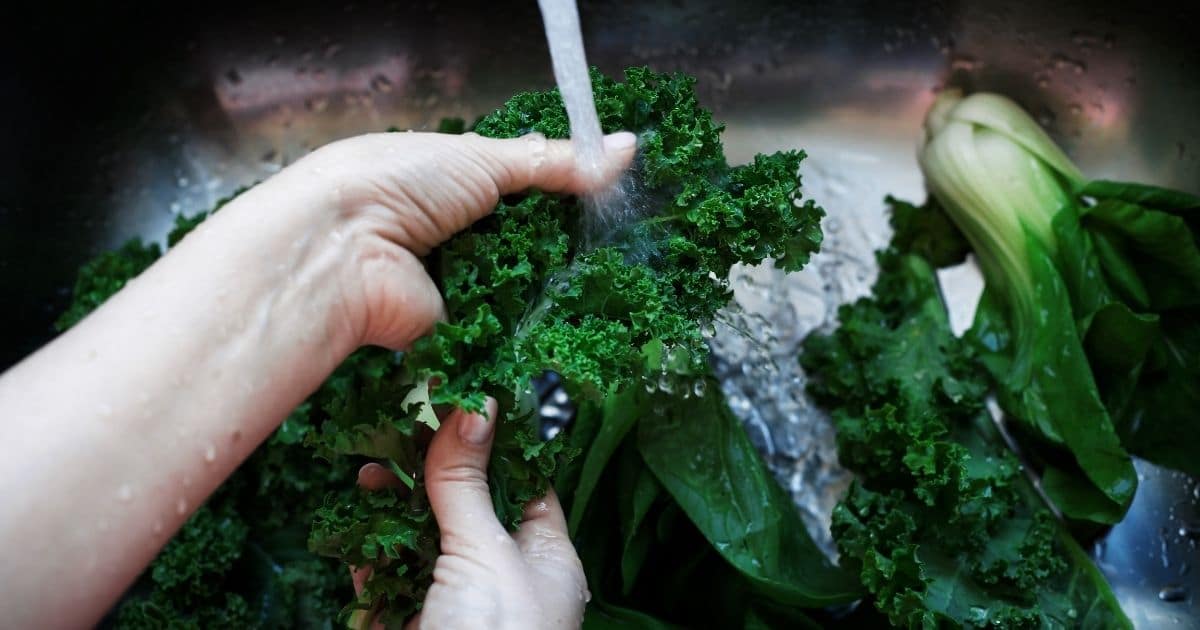
Start by washing the kale very thoroughly. The curly and dense nature of kale means that it can sometimes have dirt, pests, or other contaminants hidden inside it, especially if grown in a home garden.
Step 2

Dry your kale leaves thoroughly using either paper towels or a salad spinner. Any excess moisture left on the leaves can result in freezer burn, which will ruin the results of your freezing.
Step 3
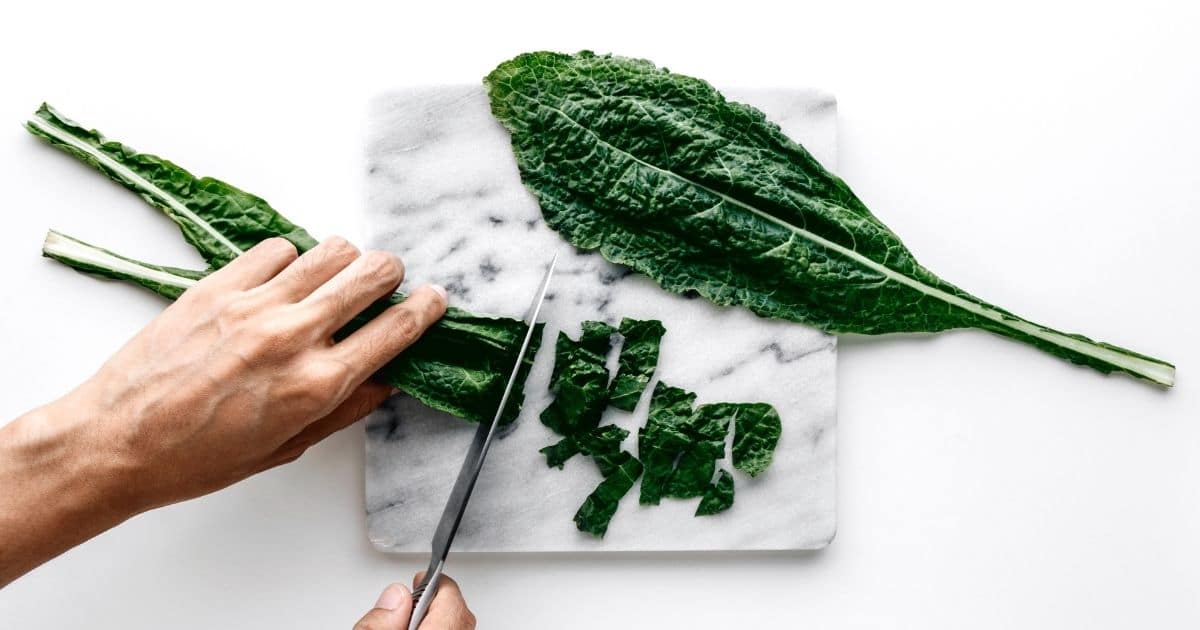
Tear or cut the leaves off the stem of your kale. Generally speaking, the woody stem of kale is not worth eating and should be removed before freezing.
Step 4
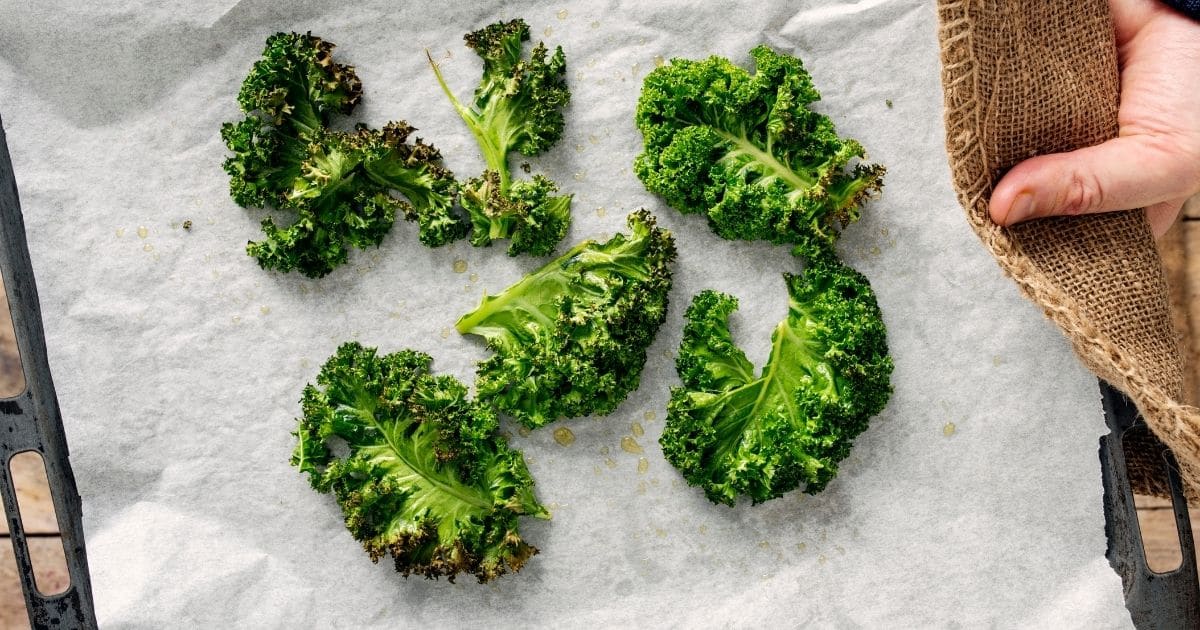
Place your cut or torn leaves on a large baking sheet. You can stack them slightly into more than one layer, where it will freeze fine as long as the leaves are completely dry. Once prepared, put the tray into the freezer and let it sit there for around two to three hours until frozen solid.
Step 5
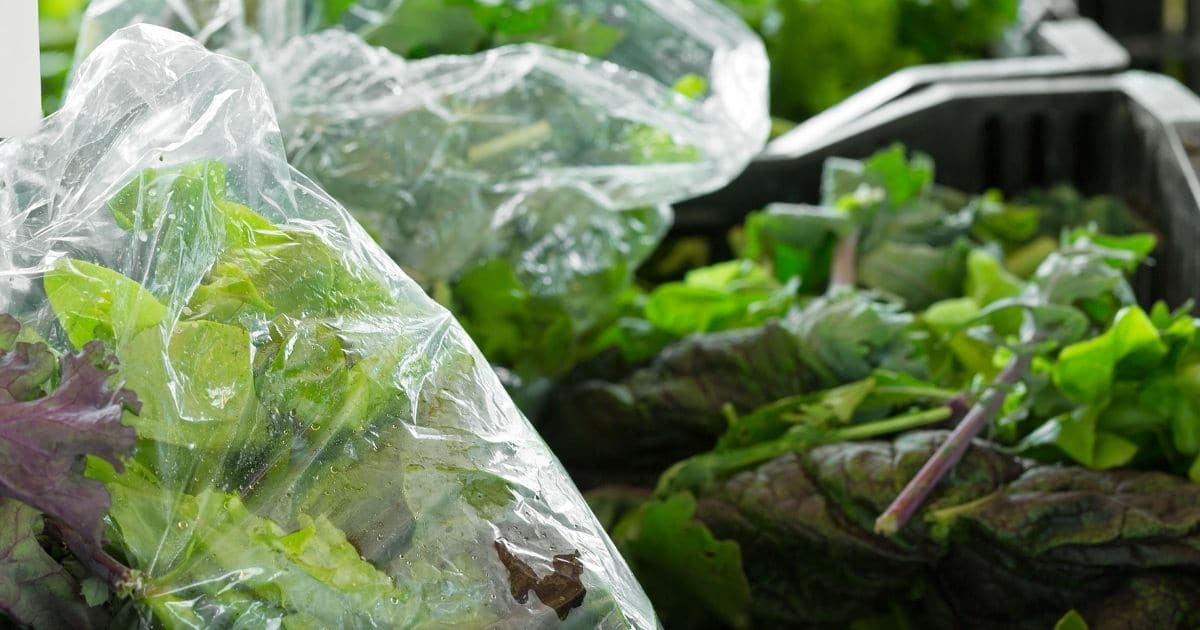
Remove the tray from the freezer after the allotted time has passed, and then place your frozen kale leaves into either freezer bags or freezer-safe containers. Label the packages for use between four to six weeks, and then toss them into the freezer to be used whenever you’re ready!
It is worth noting that some people have success with freezing unblanched kale for many months at a time. So feel free to experiment with your freezing methods. Just be aware that your unblanched leaves will be subject to ongoing enzyme activity, which leads to deterioration of flavor and texture.
How To Freeze Blanched Kale
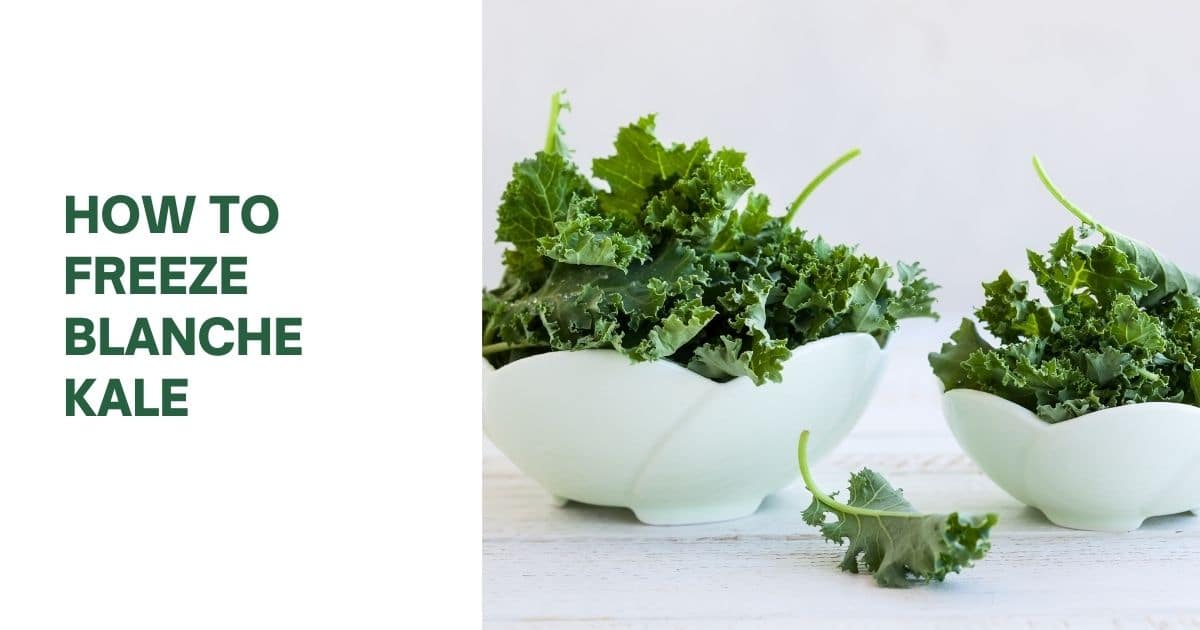
Step 1
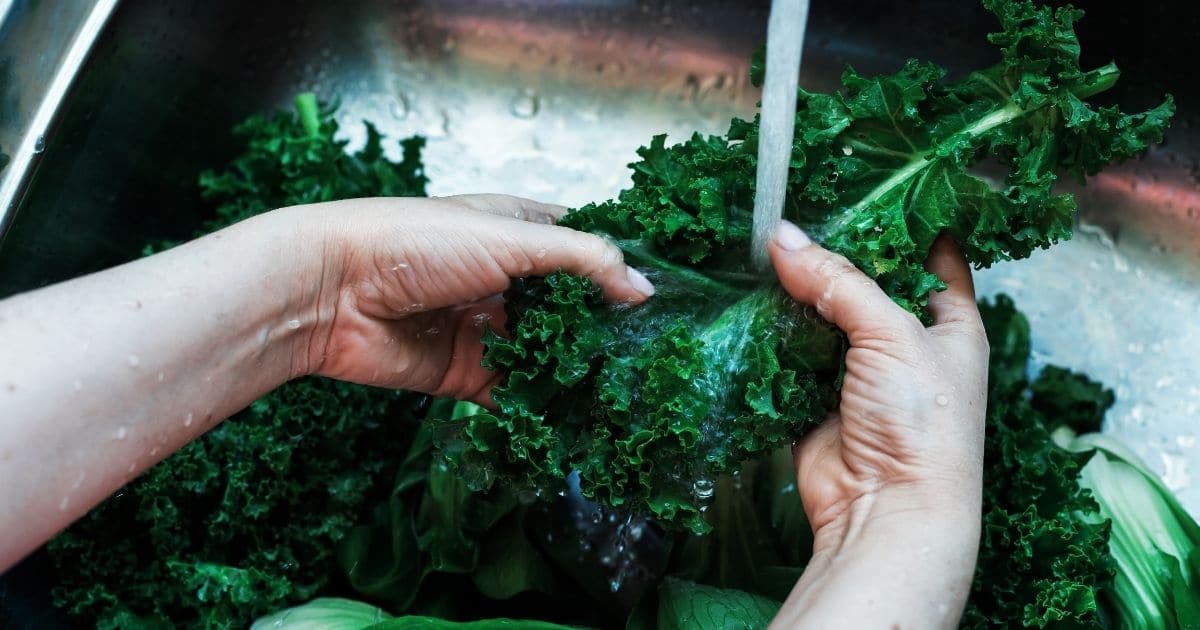
Similar to the unblanched method, start by washing and drying your kale thoroughly.
Step 2
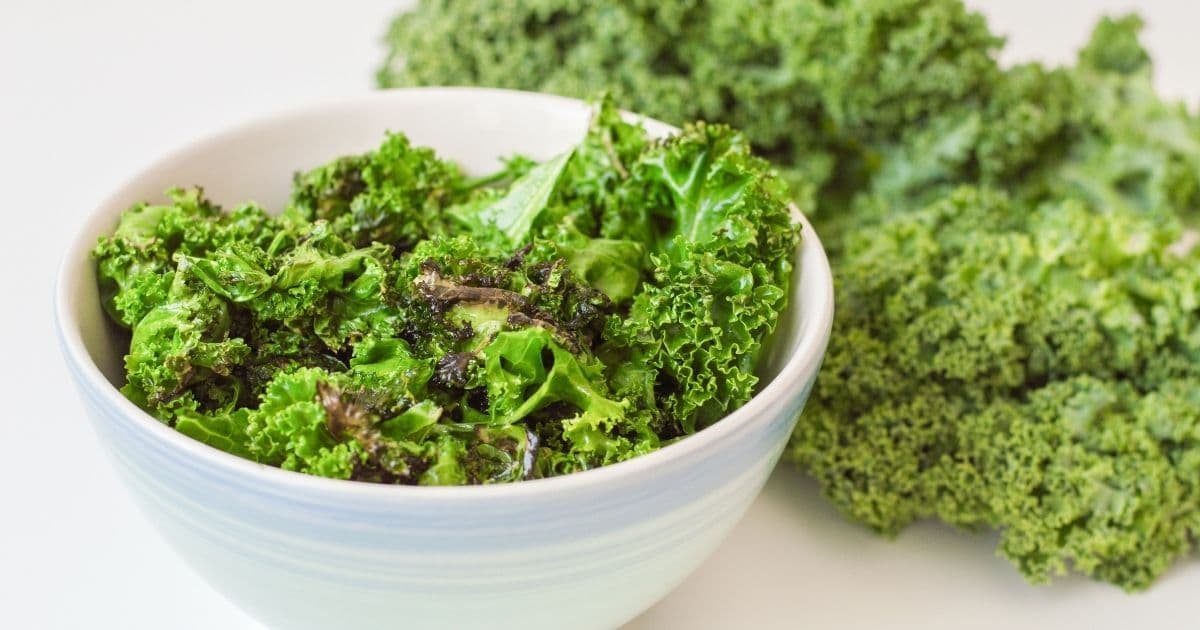
While you can blanch the stems of kale and the leaves, it is better to remove the leaves by tearing or cutting them away from the stem.
Step 3

Next, place a pot of water on the stove and start it boiling. Then fill a bowl with ice-cold water, and put it as close as possible to the pot.
Step 4
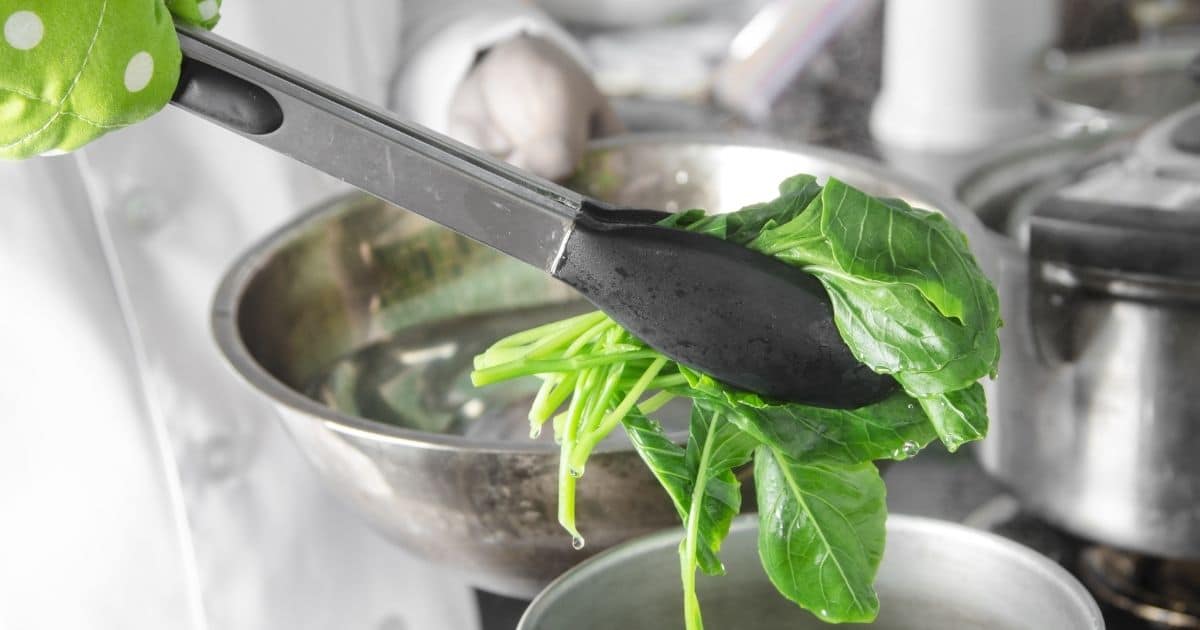
After your water is boiling, toss leaves into the water and submerge them with a slotted spoon to ensure total coverage. Allow the leaves to blanch in the water for two and a half minutes with the lid on, then use the spoon to scoop the leaves out and drop them into the ice-cold water bowl.
Step 5
Once the leaves have cooled completely, scoop them out of the bowl of water and place them on a series of kitchen towels. Once the towels are filled with leaves, roll them up and squeeze them to remove excess water.
Step 6
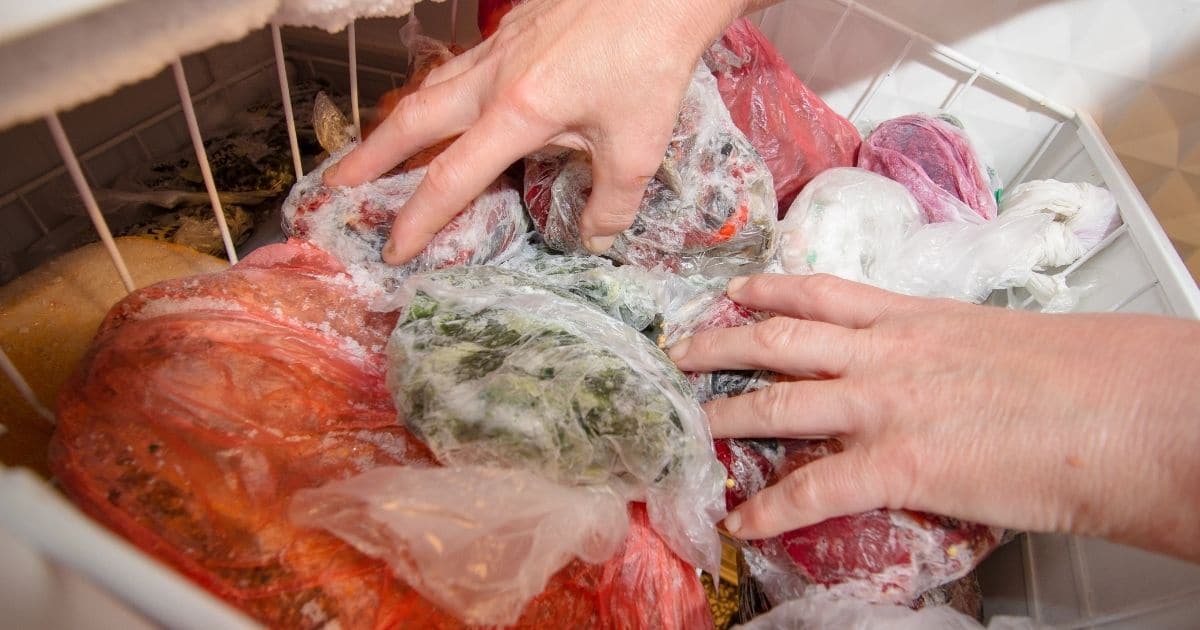
From here, you can freeze small clumps of kale using the baking sheet method listed above, or you can wait for your kale clumps to fully dry and then place them into serving-sized freezer bags and remove as much air as possible then place them in the freezer. Both options work perfectly fine; it just depends on whether you prefer to have pre-frozen clumps or bags with loosely frozen leaves.
Freezing For Smoothies or Green Juice
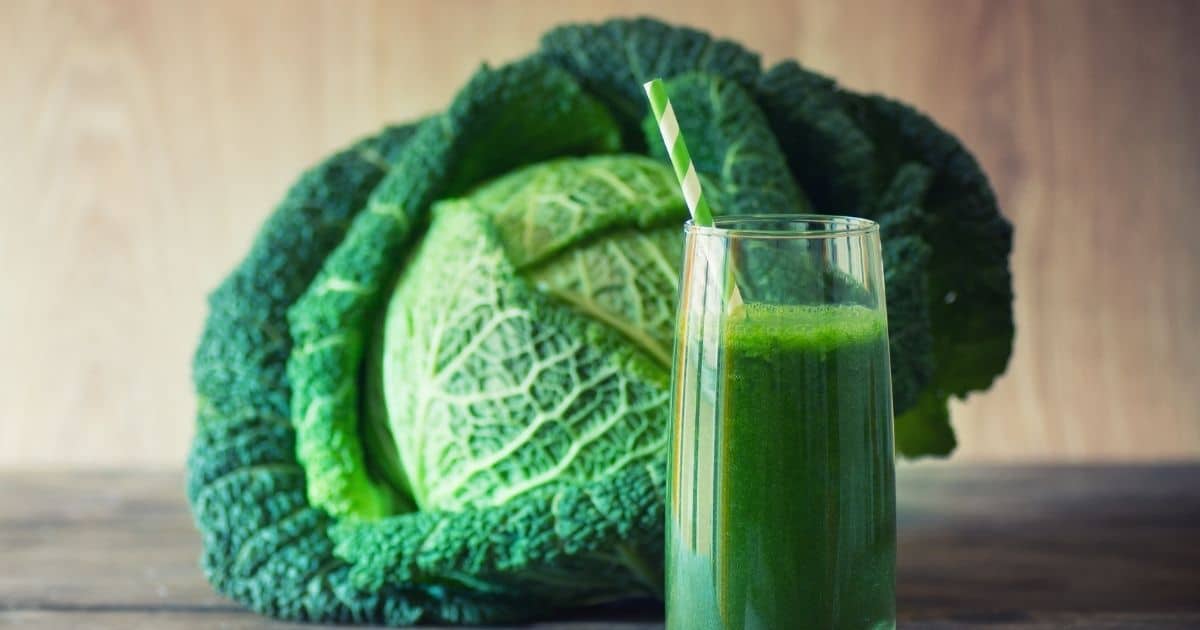
If you are a big fan of green juice or smoothies, there is an excellent way to freeze kale that suits these methods the best. Note that these steps will require the same washing instructions as the other kale preparation methods, but you do not need to take the time to dry kale if you plan to utilize it in this way.
Step 1
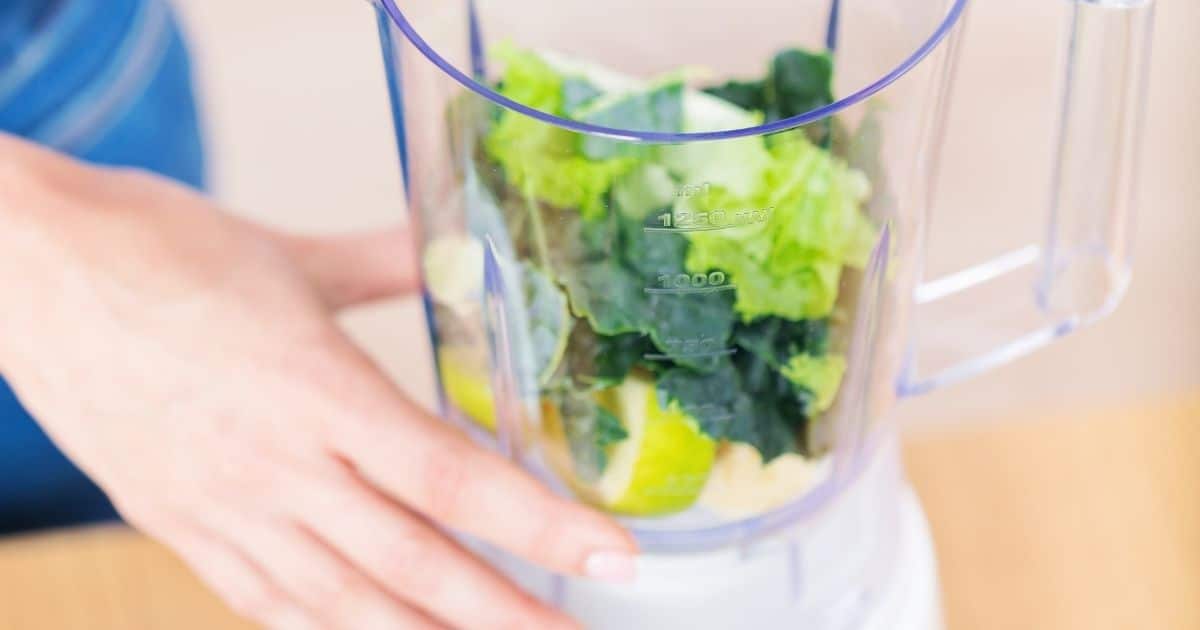
Take your washed kale and place about three to four cups of it in your blender with one cup of water. Then use the juice or puree setting (depending on the model of blender you own) to puree your kale into a liquid form.
Step 2
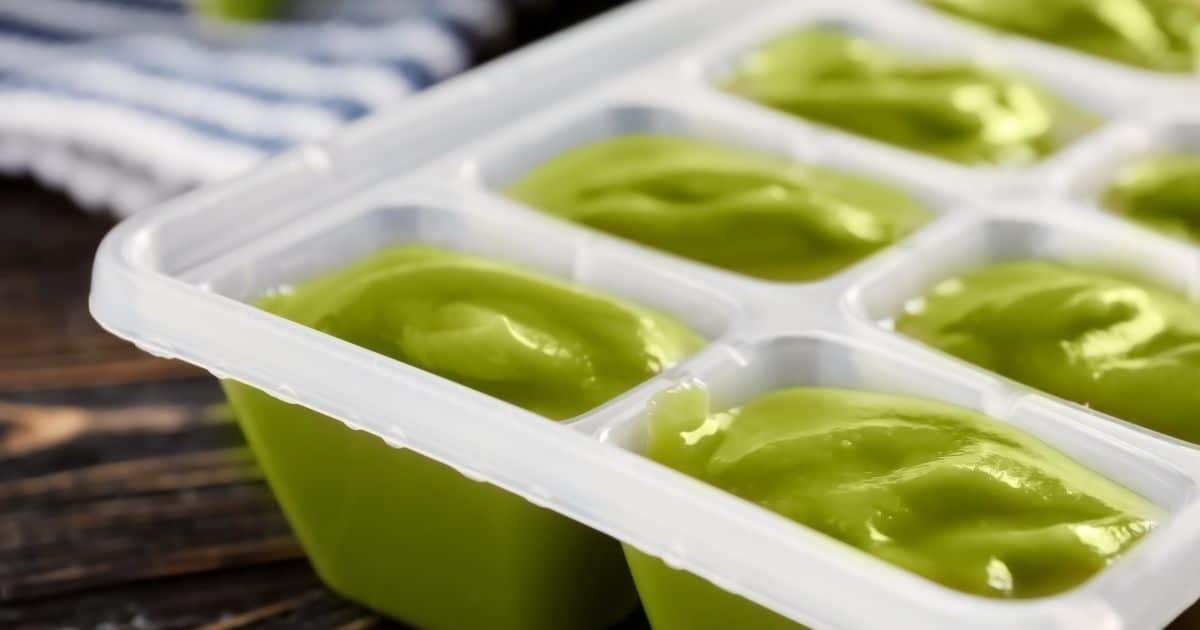
Next, pour the resulting juice into ice cube trays and let them freeze solid over the course of a few hours. Once they have frozen solid, transfer the cubes into a large freezer bag with the date and label on it, and place it in the freezer.
This kale preparation method is perfect for when you need small amounts of kale for its nutritional content, without needing to worry about the chunky texture of adding it in other frozen forms. It’s worth noting that while this method is ideal for smoothies, you can boost the health benefits of soups or sauces by merely throwing a few frozen kale cubes in to get the most out of your recipes.
How To Thaw Your Frozen Kale
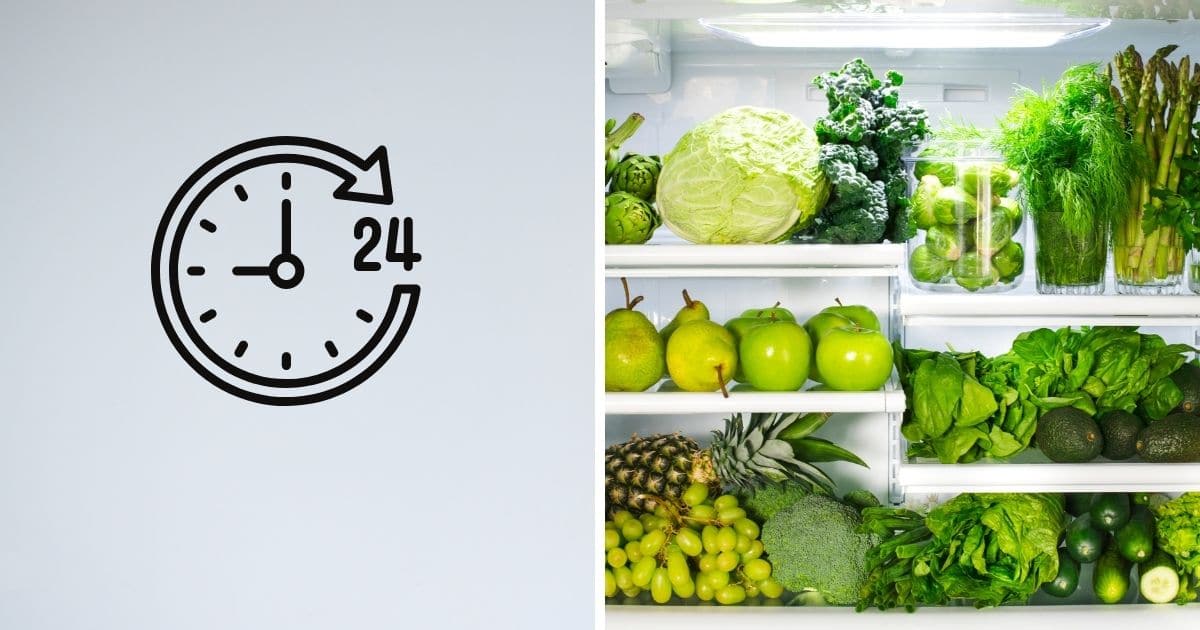
Regardless of which method you choose for freezing your kale, the time will come when you need to thaw and use your leafy greens. The best way to thaw kale is by leaving it overnight in the fridge or on the counter for an hour or two, depending on the freezer container’s size.
However, since frozen vegetables do not have nearly as crispy a texture as their raw counterparts, most of the time, you will not even need to thaw your kale at all, as it can go into most cooked recipes completely cold. If you’ve frozen your kale in exceptionally large bags or containers, pull out the frozen chunk and use a knife to cut it into pieces that will suit the meal you’re making.
Frozen kale is ideal for meals where the other ingredients will cover up the vegetables’ texture in the food or in situations where the texture doesn’t matter. An example of the former would be soups, stews, or stir-frys, which are perfect ways to use your frozen veggies during the cold winter months. Arguably the best way to use frozen kale is in smoothies, however, as you will get the most nutritional content without needing to be concerned about the texture or taste.
How to Use Your Kale
Once you’ve thawed your kale, you can go ahead and use it a ton of recipes. Aside from smoothies, which are pretty easy to figure out, we also found a few great recipes you can use the kale in.
- Kale Avocado Salad Recipe with Strawberry and Savory Granola
- Kale Salad Recipe – A Healthy Cold-Weather Dish
- Vegan Spicy Kale Caesar Salad Recipe
The Details In the Kale
At this point, it should be extremely apparent that kale is one of the few vegetables that actually earns the title “superfood.” Between its many health benefits, both nutritional and preventative, alongside its ease of use in many meals, this leafy green has earned its place at the top of many health-conscious people’s lists.
When you add in the many ways kale can be frozen to ensure that you can keep this nutritious plant available through the cold winter months, it is easy to see why so many people stock up on this leafy green. So the next time your local supermarket or farmer’s market has a sale, pick up as much as you can carry out of there now that you know the best ways to freeze kale.